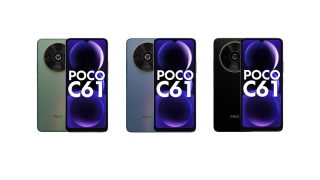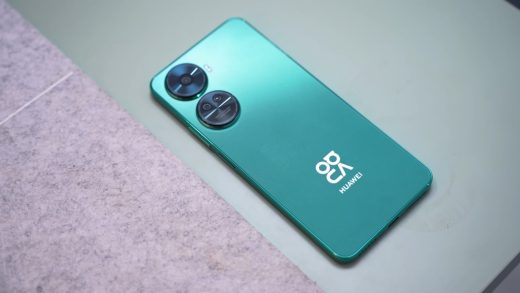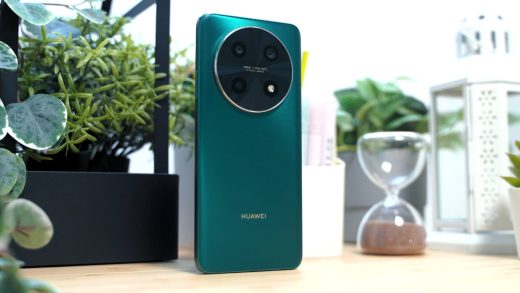Announced back in October 2022, the Nokia X30 5G with a suggested retail price of Php27,990 for the top variant of 8GB/256GB combo. While the specs configuration of the X30 5G can be considered a mid-ranger, it is Nokia’s most expensive and dominant smartphone released in the market so far. I guess Nokia is still working its way back to the mainstream and working on a flagship build, so for the meantime, the X30 5G is the best one can get out of the Nokia line-up these days.

At first glance, there seems nothing special about the Nokia X30 5G. Very simple design with an all-metal frame and polycarbonate back cover.
In fact, Nokia claims the X30 5G is their most eco-friendly smartphone yet — it has a frame made with 100% recycled aluminum and back cover of 65% recycled plastic. Now that’s plus points for Nokia for being eco-friendly and sustainable.

Despite that, the phone is surprisingly well-built with a nice matte back finish, has good grip, and light on the hands. The power button and volume rocker are found on the right side; speaker grill, primary mic and USB-C charging port at the bottom; SIM card slot on the left and noise-canceling mic up top.

The front panel is a 6.43-inch AMOLED display with full HD+ resolution and 90Hz refresh rate. There’s a layer of Gorilla Glass Victus for additional protection against usual bumps and scratches.

There’s an under-display fingerprint sensor and face unlock feature for biometric security and you also get an IP67 water and dust resistance.
The Nokia X30 is powered by a Snapdragon 695 5G with Adreno 619 GPU. The chipset is quite dated already but it is still a pretty capable mid-range processor that’s decent for gaming in moderate settings. It’s the same chipset used in the Redmi Note 11 Pro 5G, Realme 10 Pro and OnePlus Nord CE 2 Lite 5G.
Benchmarks for the Snapdragon 695 aren’t stellar, and just as expected, we get Antutu scores in the 397k range, PC Mark Work 3.0 score of 8580 and GeekBench score of 1762.

Gaming performance is good as long as you don’t crank the settings to High. It’s responsive but you can’t really feel that buttery-smooth graphics that you’d expect, even if you’re simply playing the usual games like Genshin Impact, Asphalt 9 or even Mobile Legends.
Perhaps the biggest drawback of the chipset is that it does not support 4K video recording so you’re stuck with 1080p at 60fps as the maximum resolution for shooting videos.

And speaking of the cameras, the Nokia X30 only comes with 2 rear shooters. The primary one is a 50-megapixel f/1.9 that uses big pixel 1.0 micrometer with optical image stabilization.
The lens is also protected by Corning Gorilla Glass with DX+ for better optical performance and extra protection from scratches.

The native camera app comes with a number of features, including Capture Fusion for UW, Night Mode 2.0, Dark Vision, Tripod Mode, Night Selfie, AI Portrait.
The secondary camera is a 13-megapixel ultrawide lens with f/2.4 aperture and 123° field-of-view.
Check out some of the sample photos and videos we took using the rear cameras.
At the front, we have a 16-megapixel selfie shooter with a f/2.4 aperture.
The device runs on Android 12 operating system and is included in the Android One program. That’s why you’ll see the Android One logo the first time you boot up the device. That means you get a clean vanilla UI or stock Android interface.

Nokia guarantees up to 3 OS upgrades and 3 years of monthly security updates for the Nokia X30, so you don’t need to worry about getting a replacement device in the next 3 years since your phone will always be up to date, software-wise. That’s pretty much standard for any device included in the Android One program. Also, latest reports indicate that Android 13 is one its way on to the X30 anytime soon.

You also get ample memory and storage on the Nokia X30. It’s either 6GB or 8GB of RAM or 128GB and 256GB of internal storage. Our review unit comes in the 8GB/256GB combo and Cloudy Blue color. There’s no microSD card expansion slot here but 256GB is more than ample storage for most of your needs. Otherwise, there’s Google Drive that you can enable for additional cloud storage.

As for connectivity, it’s got 2 nano SIM card slots, both supporting 5G connectivity. There’s also Bluetooth 5.1, NFC, dual-band GPS and dual-band WiFi.
The USB Type-C for charging also supports USB2 OTG. The 4,200mAh battery might not seem big enough, but it can actually last for two days on moderate use before re-charging. Well, that really depends on your usage behavior so individual results may vary.
Our PCMark Battery test yielded a time of 14 hours, 54 minutes at 50% brightness, 0% volume and in Airplane mode. That’s impressive, considering the battery capacity of the unit.

The device also supports 33W fast charging with QC3, PD3 and PPS compatibility. Charging time is pretty good – can go up to 70-75% in just half an hour and fully charge within a full hour. Surprisingly though, there’s no charger that came with the box. Just the SIM PIN ejector and the Type-C charging cable.

There’s one speaker grill at the bottom end with a main microphone and second microphone for noise cancelation. It features OZO Spatial Audio capture with wind noise reduction, aptX HD and aptX Adaptive. This enhanced codec supports 24-bit music quality over Bluetooth. Great if you also have good TWS to pair it with.

Nokia has done a great effort to make the X30 5G different from other competing brands. While everyone else is too focused on performance and benchmark numbers and multiple camera setup, the Nokia X30 is trying to carve a niche for a sustainable device that might not have stellar specs on paper but performs as well as any other smartphone in its category.

IF only Nokia could get that message across to consumers – a well-rounded, nothing fancy-schmancy, smartphone made with durable yet sustainable materials, regular security updates and extended Android OS update support. But yeah, not everyone will appreciate the approach – especially if you didn’t include a charger in the retail box, right?
Nokia X30 5G specs:
6.43-inch FHD+ (2400 x 1080) AMOLED, 409ppi
90Hz refresh rate
Corning Gorilla Glass Victus
Qualcomm Snapdragon 695 5G SoC
Adreno 619 GPU
6GB, 8GB RAM
128GB UFS 2.2, 256GB UFS 3.0 storage
microSD (hybrid slot)
Dual rear cameras:
• 50MP F1.8 main
• 13MP F2.4 ultrawide
16MP F2.4 front camera
Hybrid Dual SIM
5G, 4G LTE
Wi-Fi 6
Bluetooth 5.1
NFC
GPS, A-GPS, GLONASS, GALILEO, BDS
USB Type-C
Fingerprint scanner (under-display)
IP67 dust/water resistant
Android 12
4,200mAh battery w/ 33W fast charging
158.9 x 73.9 x 8 mm (dimensions)
185 grams (weight)
































Yeah…. no. I’m all for the environment and all but the specs and the price point are simply too far fetch to be even considered. I’d expect something cheaper if im using recycled materials too btw (isn’t that the point of recycling anyway?)
The point of recycling is not to save on costs. Recycling is a very involved and often very expensive process. We recycle so that we don’t produce more waste and to prevent existing materials from ending up in landfills.